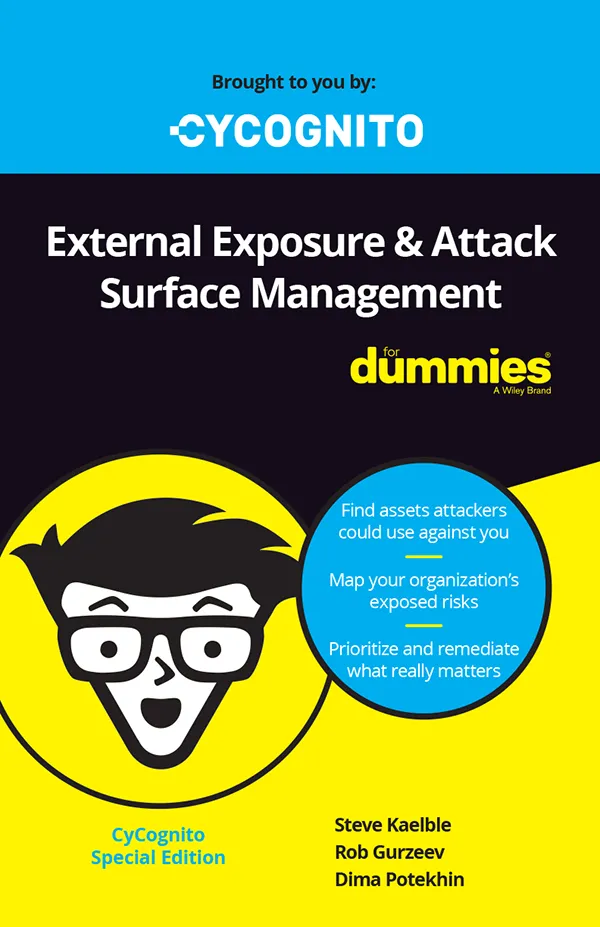



Risk-based vulnerability management (RBVM) is a strategic approach to cybersecurity that prioritizes vulnerabilities based on the risk they pose to an organization. Unlike traditional methods that assess vulnerabilities solely based on their severity, RBVM considers factors such as the threat landscape, asset criticality, and potential impact of exploitation.
This approach ensures that resources are allocated efficiently, addressing vulnerabilities that are most likely to be exploited and cause harm. By integrating risk assessment into vulnerability management, organizations can make informed decisions about which issues to address first, balancing security needs with business goals.
Traditional vulnerability management involves identifying, classifying, and mitigating vulnerabilities. The primary focus is on discovering and fixing flaws without necessarily considering their real-world impact. This approach often leads to a reactive stance, where organizations address vulnerabilities in order of their discovery rather than their potential risk.
Risk-based vulnerability management adds the crucial step of contextual risk assessment. By evaluating the likelihood and impact of exploitation, organizations can prioritize remediation efforts that align with their risk tolerance and business objectives. This helps avoid wasting resources on low-risk issues, allowing security teams to concentrate on the most critical threats, and enabling a smarter allocation of time and effort.
Implementing risk-based vulnerability management (RBVM) allows organizations to focus their security efforts where they matter most:

Rob Gurzeev, CEO and Co-Founder of CyCognito, has led the development of offensive security solutions for both the private sector and intelligence agencies.
In my experience, here are tips that can help you better implement risk-based vulnerability management (RBVM):

As your attack surface has grown to cloud infrastructures and across subsidiaries, attackers are looking for and finding unknown and unmanaged assets to serve as their entry points.
Risk-based vulnerability management operates as a continuous and cyclical process that integrates automation, contextual analysis, and targeted remediation. This ensures that security teams maintain a dynamic and prioritized view of vulnerabilities, focusing efforts on the most impactful issues. The RBVM process generally follows five key stages:
The process starts with automated tools or agents that continuously scan environments, including on-premises systems, cloud infrastructure, and containers. These tools collect data on software versions, open ports, and misconfigurations, while identifying new vulnerabilities as they emerge. By automating discovery, organizations ensure real-time visibility into their security posture.
Raw vulnerability data is enriched with contextual information to understand the actual risk. This involves correlating vulnerabilities with exploit availability, system exposure, the criticality of affected assets, and any historical incidents. Compliance requirements and potential business impacts are also factored in, allowing organizations to create a prioritized list of vulnerabilities.
With vulnerabilities ranked by risk, security teams can develop focused action plans. High-risk vulnerabilities, particularly those with known exploits or targeting critical systems, are addressed first and assigned shorter remediation deadlines. Lower-priority vulnerabilities are scheduled based on available resources and risk tolerance. This prioritization ensures that efforts are directed where they can make the most difference, avoiding time wasted on low-impact issues.
Remediation actions may include applying patches, changing configurations, or adjusting access controls. RBVM platforms often integrate with ticketing systems, streamlining the coordination of fixes across IT, DevOps, and quality assurance teams. Automation is leveraged where possible to accelerate patching and resolve the most critical vulnerabilities quickly.
Once remediation steps are completed, follow-up scans or monitoring logs confirm whether vulnerabilities have been effectively addressed. These results are documented for audit purposes and help measure key metrics such as average patch time. Any failures or recurring issues are flagged for further investigation. Insights from these outcomes are used to refine risk scoring models and improve future response processes, keeping the RBVM program adaptive.
Related content: Read our guide to cybersecurity risk management.
By implementing these best practices, organizations can ensure the most effective vulnerability management strategy based on risk assessment and prioritization.
To effectively implement risk-based vulnerability management, organizations must first establish a solid asset management framework. This involves using automated discovery tools to identify all assets across environments, ensuring that no systems, servers, or devices are overlooked. Regular cross-checks and inventory reconciliation help maintain accuracy and completeness of the asset database.
Keeping the asset inventory up to date is essential for ensuring vulnerabilities are assessed in the correct business context. By knowing what data each asset processes and its role within operations, organizations can better understand the potential impact of vulnerabilities affecting those assets.
Once assets are inventoried, organizations need to prioritize them based on their criticality to business operations. Assets that handle sensitive customer data, process financial transactions, or support mission-critical services should take precedence over non-essential systems.
For example, a public-facing customer portal that processes payments is far more critical than an internal testing server containing no sensitive information. This approach ensures that vulnerabilities affecting high-value assets are addressed first, reducing the organization's exposure to impactful threats.
Vulnerability severity alone doesn't provide the full risk picture. Organizations should combine severity scores, such as those from the Common Vulnerability Scoring System (CVSS), with asset criticality and threat intelligence to make informed decisions.
For example, a critical remote code execution (RCE) vulnerability on an internal database may technically have a higher severity score, but a high-severity SQL injection vulnerability exposed on a public-facing portal might demand faster remediation due to its immediate accessibility to attackers. This context-driven assessment ensures prioritization reflects real risk exposure.
An important step in RBVM is defining the organization’s risk tolerance by considering the potential business impact of vulnerabilities. This involves identifying mission-critical systems, determining acceptable downtime, and establishing thresholds for when security teams need to act.
Organizations can leverage frameworks like the Factor Analysis of Information Risk (FAIR) or NIST’s Risk Management Framework to quantify risk tolerance and create clear decision-making guidelines. This ensures that vulnerability management efforts are aligned with the organization's overall risk posture and business objectives.
Establishing internal service-level agreements (SLAs) based on the risk level provides structure and accountability to the RBVM process. For example, critical vulnerabilities with known exploits might have a 72-hour remediation window, while medium-risk issues could have a 15-day remediation guideline, per the CISA recommendations.
These SLAs help security teams track patching performance, identify bottlenecks in processes, and ensure timely mitigation of vulnerabilities. Over time, strict adherence to SLAs can highlight areas where processes need improvement, supporting continuous optimization of the vulnerability management lifecycle.
The CyCognito platform addresses today’s vulnerability management requirements, built on the foundation of full discovery of your entire extended IT ecosystem, to help you proactively defend against threats from even the most sophisticated attackers. It operates continuously and autonomously using advanced attacker-reconnaissance techniques to identify attackers' paths of least resistance into your environment so that you can efficiently eliminate them.
Once it identifies potential attack vectors, it prioritizes risks based on asset criticality and issue severity. The result is a platform that delivers risk-based vulnerability management for your entire attacker-exposed IT ecosystem.
The CyCognito platform uniquely delivers:
Learn more about CyCognito for vulnerability management.

As your attack surface has grown to cloud infrastructures and across subsidiaries, attackers are looking for and finding unknown and unmanaged assets to serve as their entry points.